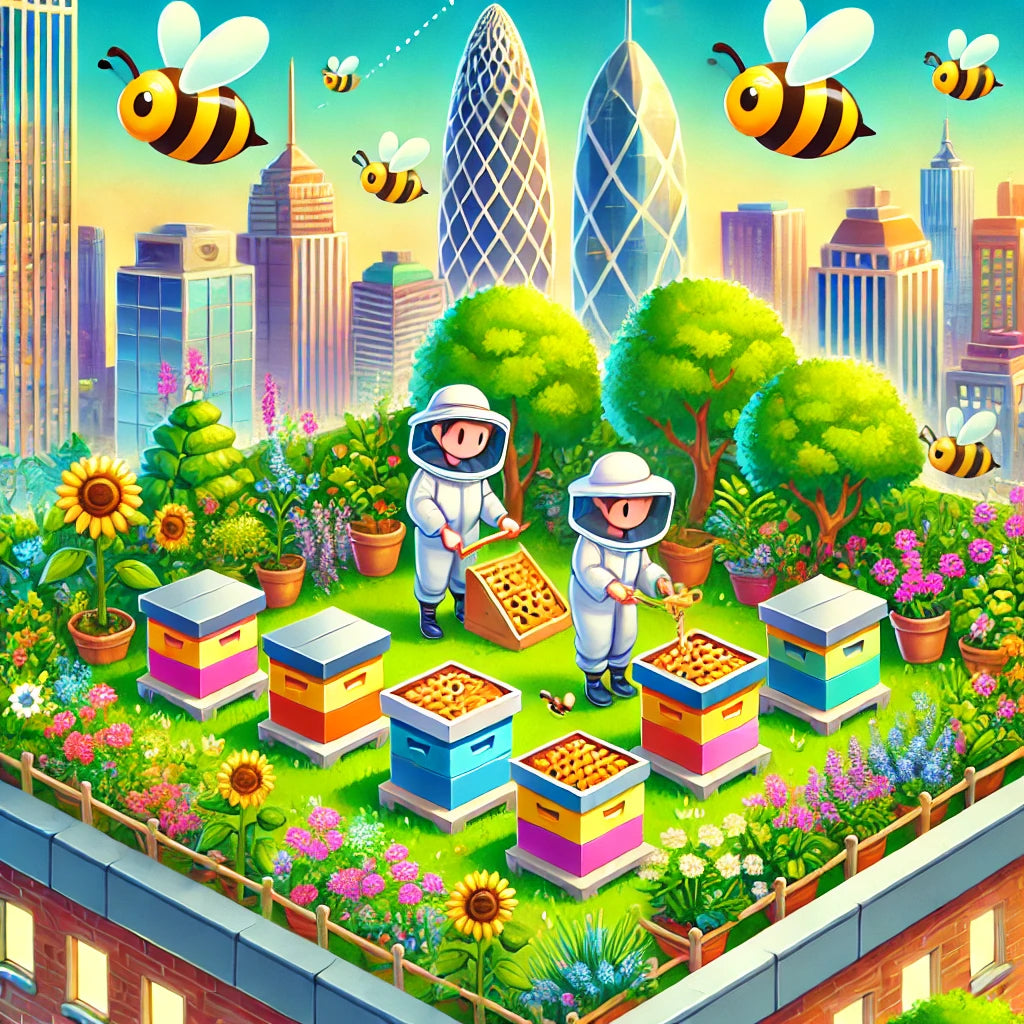
Urban Beekeeping | How City Dwellers Can Start Their Own Hive
Urban beekeeping is not just a trend; it's a sustainable practice that brings nature back into the concrete jungle. With city gardens, rooftops, and community spaces increasingly hosting bee colonies, urban beekeeping has become a feasible and rewarding hobby for many city dwellers. Here’s a detailed guide on how you can start your own hive and contribute to urban biodiversity while enjoying the benefits of local honey production.
Why Urban Beekeeping?
Benefits to the Environment
Urban beekeeping plays a crucial role in supporting the ecosystem. Bees are essential pollinators, and their presence in urban areas helps pollinate city gardens, parks, and green spaces. This not only aids in the growth of local flora but also enhances biodiversity in the city.
Personal Rewards
Beekeeping offers numerous personal rewards. It’s a fulfilling hobby that connects you with nature and provides a sense of accomplishment. Plus, there’s the added bonus of harvesting your own honey, which is often richer in flavor and nutrients compared to store-bought varieties.
Getting Started: The Basics
Legal Considerations
Before you start, check local regulations regarding beekeeping. Many cities have specific guidelines and permits required for keeping bees. Some areas may have restrictions on the number of hives or their placement. Ensuring you comply with these regulations is crucial to avoid any legal issues.
Space Requirements
Contrary to popular belief, you don’t need a large backyard to keep bees. A small garden, balcony, or rooftop can be sufficient. The key is to ensure there’s enough space for the hive and that it’s placed in a location with minimal disturbance from pedestrians and pets.
Choosing the Right Hive
For urban beekeeping, the Langstroth hive is the most popular choice due to its modular design and ease of management. It consists of stackable boxes with removable frames, making it convenient for inspection and honey extraction. However, there are other options like Top Bar hives and Warre hives, each with its own advantages.
Setting Up Your Hive
Equipment Needed
Hive Components: This includes the hive body, frames, foundation, and a cover. Make sure you purchase high-quality materials that can withstand urban weather conditions.
Beekeeping Suit: A suit with a veil is essential to protect yourself from stings.
Smoker: This calms the bees during inspections.
Hive Tool: Used for prying apart frames and scraping off excess wax.
Feeder: Especially useful during the initial setup and in times of nectar dearth.
Acquiring Bees
You can acquire bees in several ways. Purchasing a nucleus colony (nuc) from a local beekeeper is a common method. A nuc includes a queen, workers, brood, and honey stores, which gives your hive a head start. Alternatively, you can buy a package of bees or catch a swarm if you’re experienced enough.
Placement
Place your hive in a sunny spot with some shade during the hottest part of the day. The entrance should face southeast if possible, allowing the bees to start foraging early. Ensure there’s a nearby water source, like a birdbath with stones or floating wood, so bees can land and drink safely.
Maintaining Your Hive
Regular Inspections
Conduct regular hive inspections every 7-10 days during the active seasons (spring and summer). Look for signs of a healthy queen, brood patterns, honey stores, and any potential issues like pests or diseases.
Feeding
In urban environments, nectar and pollen sources can sometimes be scarce. Feeding your bees sugar syrup in the spring and fall can help them thrive. Ensure you use a feeder and avoid overfeeding, which can attract pests.
Swarm Management
Swarming is a natural bee behavior, but in an urban setting, it’s essential to manage it to avoid alarming neighbors. Regular inspections and providing ample space for the colony to expand can prevent swarming. If you notice swarm cells (queen cells), take action by splitting the hive or using other swarm prevention techniques.
Pest and Disease Control
Urban environments can present unique challenges in terms of pests and diseases. Regularly monitor for common issues like Varroa mites, wax moths, and American foulbrood. Using integrated pest management (IPM) practices can help keep these problems under control.
Harvesting Honey
Timing
Harvest honey at the end of the main nectar flow, typically late summer. Ensure there’s enough honey left in the hive for the bees to survive the winter.
Extraction
Use a honey extractor to spin the frames and collect the honey. Urban beekeepers often prefer manual extractors due to their compact size and ease of use. Once extracted, strain the honey to remove any wax or debris before bottling.
Storing Honey
Store your honey in airtight jars in a cool, dark place. Properly stored honey can last indefinitely without spoiling.
Community and Education
Joining a Beekeeping Association
Joining a local beekeeping association can provide valuable resources, support, and a sense of community. These groups often offer workshops, mentoring programs, and networking opportunities.
Educating Neighbors
Educate your neighbors about the benefits of urban beekeeping. Address any concerns they might have about safety and allergies. Sharing your honey with them can also help build goodwill.
Promoting Urban Beekeeping
Advocate for urban beekeeping in your community. Support local policies that encourage sustainable beekeeping practices and create more green spaces for pollinators.
Urban beekeeping is a rewarding venture that contributes to the environment and provides numerous personal benefits. By following the steps outlined in this guide, city dwellers can successfully start and maintain their own beehives. Embrace the challenge, enjoy the journey, and savor the sweet rewards of your labor.



Leave a comment